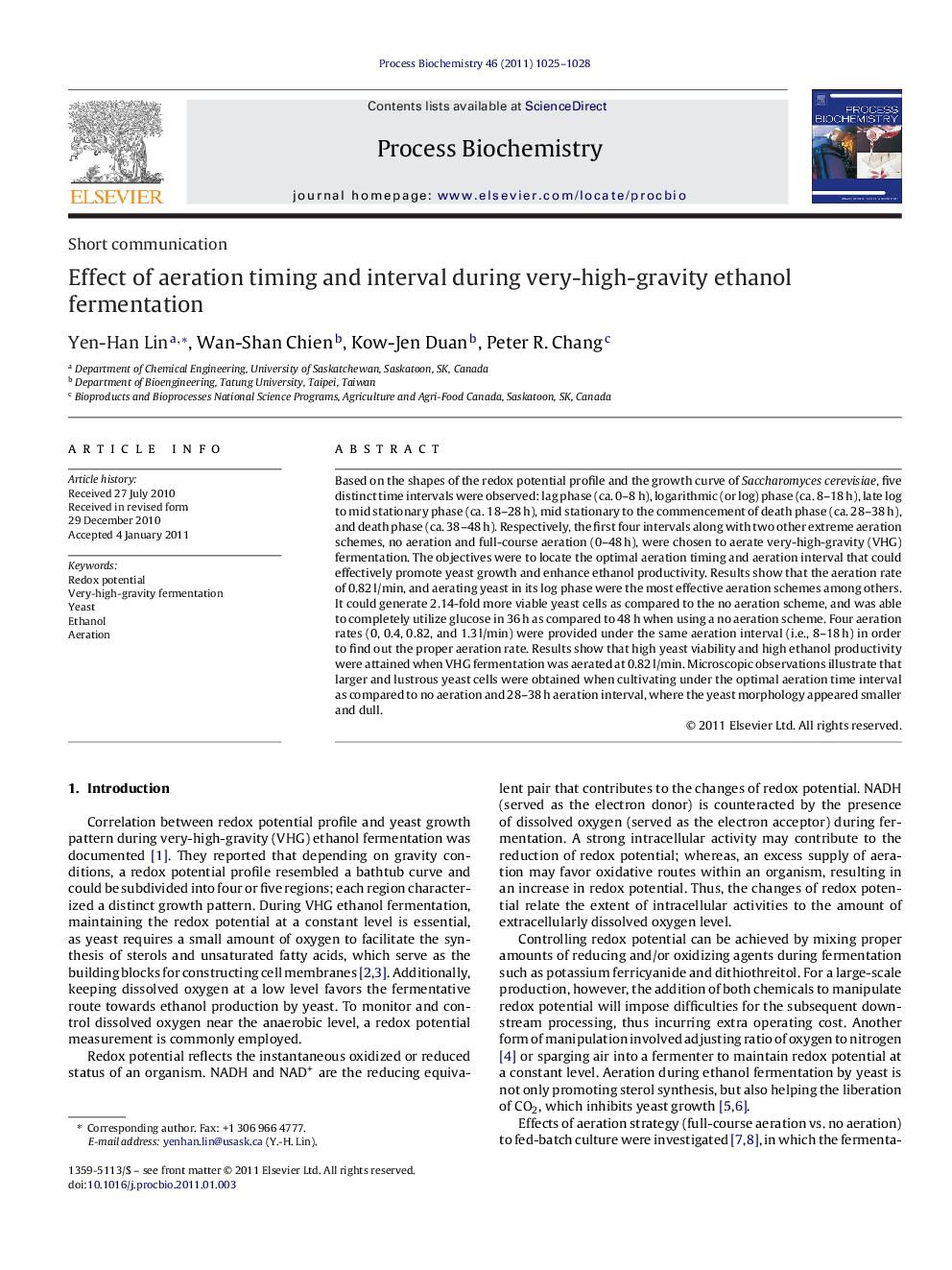| Article ID | Journal | Published Year | Pages | File Type |
|---|---|---|---|---|
| 34892 | Process Biochemistry | 2011 | 4 Pages |
Based on the shapes of the redox potential profile and the growth curve of Saccharomyces cerevisiae, five distinct time intervals were observed: lag phase (ca. 0–8 h), logarithmic (or log) phase (ca. 8–18 h), late log to mid stationary phase (ca. 18–28 h), mid stationary to the commencement of death phase (ca. 28–38 h), and death phase (ca. 38–48 h). Respectively, the first four intervals along with two other extreme aeration schemes, no aeration and full-course aeration (0–48 h), were chosen to aerate very-high-gravity (VHG) fermentation. The objectives were to locate the optimal aeration timing and aeration interval that could effectively promote yeast growth and enhance ethanol productivity. Results show that the aeration rate of 0.82 l/min, and aerating yeast in its log phase were the most effective aeration schemes among others. It could generate 2.14-fold more viable yeast cells as compared to the no aeration scheme, and was able to completely utilize glucose in 36 h as compared to 48 h when using a no aeration scheme. Four aeration rates (0, 0.4, 0.82, and 1.3 l/min) were provided under the same aeration interval (i.e., 8–18 h) in order to find out the proper aeration rate. Results show that high yeast viability and high ethanol productivity were attained when VHG fermentation was aerated at 0.82 l/min. Microscopic observations illustrate that larger and lustrous yeast cells were obtained when cultivating under the optimal aeration time interval as compared to no aeration and 28–38 h aeration interval, where the yeast morphology appeared smaller and dull.
